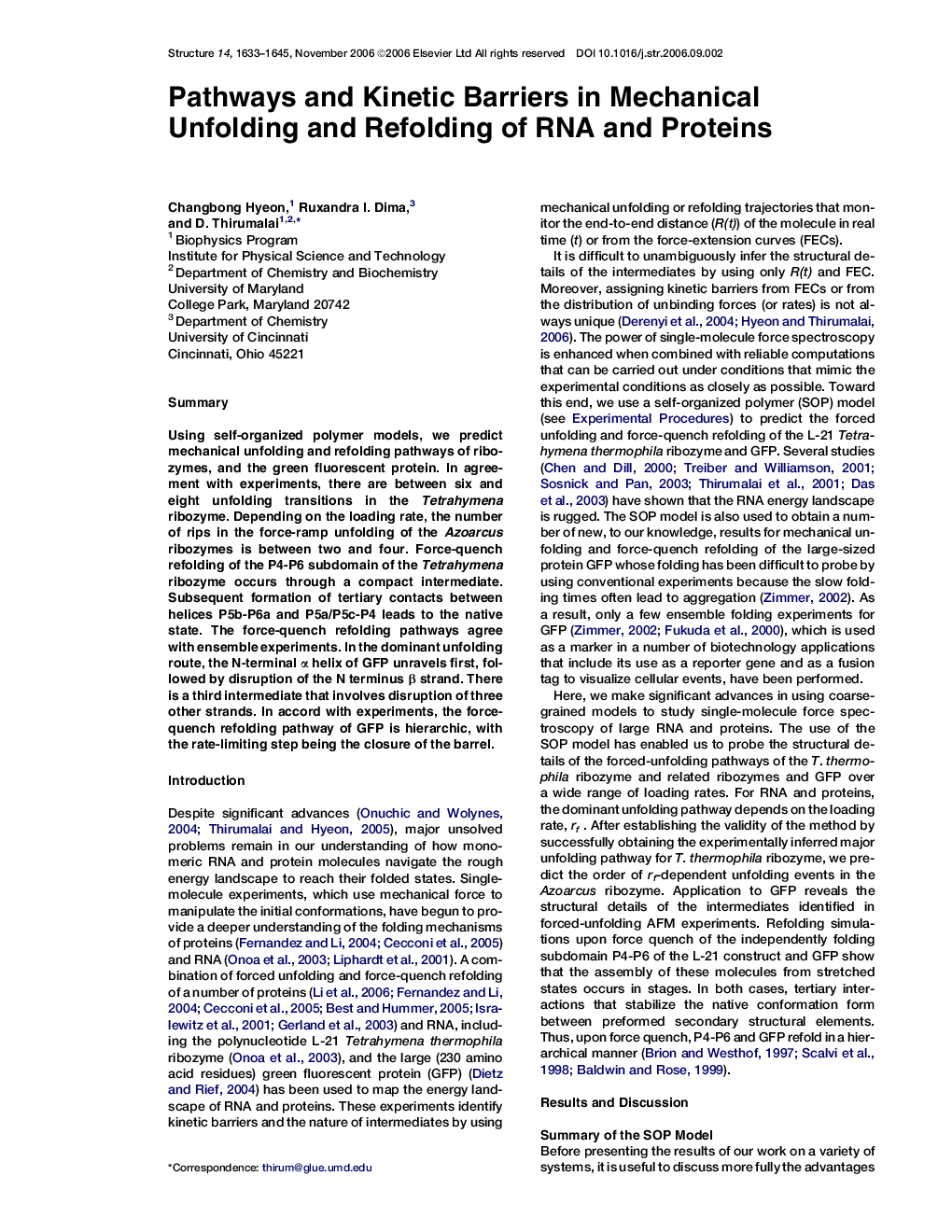| Article ID | Journal | Published Year | Pages | File Type |
|---|---|---|---|---|
| 2030324 | Structure | 2006 | 13 Pages |
SummaryUsing self-organized polymer models, we predict mechanical unfolding and refolding pathways of ribozymes, and the green fluorescent protein. In agreement with experiments, there are between six and eight unfolding transitions in the Tetrahymena ribozyme. Depending on the loading rate, the number of rips in the force-ramp unfolding of the Azoarcus ribozymes is between two and four. Force-quench refolding of the P4-P6 subdomain of the Tetrahymena ribozyme occurs through a compact intermediate. Subsequent formation of tertiary contacts between helices P5b-P6a and P5a/P5c-P4 leads to the native state. The force-quench refolding pathways agree with ensemble experiments. In the dominant unfolding route, the N-terminal α helix of GFP unravels first, followed by disruption of the N terminus β strand. There is a third intermediate that involves disruption of three other strands. In accord with experiments, the force-quench refolding pathway of GFP is hierarchic, with the rate-limiting step being the closure of the barrel.
